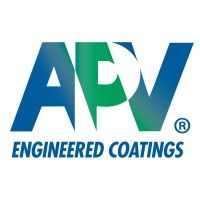Optimizing the sourcing of Original Equipment Manufacturer (OEM) components is a key driver of success in today’s fast-paced global marketplace. As businesses face growing demand for faster production, cost efficiency, and reliable quality, having a streamlined supply chain becomes more important than ever. In this article, we’ll discuss practical strategies and innovations that businesses can implement to optimize their OEM component sourcing, enhance supply chain efficiency, and reduce costs. Understanding these key elements is essential for maintaining a competitive edge.
OEM Source Inc is a trusted provider of OEM components, offering a range of products and services designed to help businesses streamline their supply chains and improve procurement processes. With a focus on quality, reliability, and customer satisfaction, OEM Source Inc. provides businesses with access to high-quality parts, advanced sourcing solutions, and expert guidance in optimizing their supply chain operations. Whether you are looking for specific OEM components or seeking a comprehensive sourcing strategy, OEM Source Inc. is committed to helping you achieve your supply chain goals with efficiency and precision.
1. The Importance of a Robust Supplier Network
A well-established supplier network is the backbone of an efficient OEM component sourcing strategy. It enables businesses to access a wide range of components at competitive prices while maintaining the quality and reliability of their products. Developing strong, long-term relationships with trusted suppliers ensures that companies can secure the parts they need, when they need them, without compromising on quality. In addition, a robust supplier network allows businesses to have a backup plan in place should any disruptions occur, providing a sense of security in an unpredictable market.
2. Digital Tools for Streamlined Sourcing
The advent of digital tools has revolutionized the way businesses approach sourcing OEM components. From advanced inventory management systems to cloud-based supply chain platforms, digital solutions are making sourcing more efficient than ever. These tools provide real-time data, making it easier to monitor inventory, track orders, and forecast demand. By using digital tools, companies can reduce human errors, improve order accuracy, and ensure that their supply chains are always operating at optimal efficiency.
3. Optimizing Inventory Management for Efficiency
Effective inventory management is a critical aspect of optimizing OEM component sourcing. Companies must ensure that they have the right parts in stock at the right time to avoid overstocking, which can tie up capital, or understocking, which can lead to production delays. Implementing just-in-time (JIT) inventory systems and using automated restocking tools can help businesses maintain the perfect balance. This minimizes waste, reduces costs, and ensures that the supply chain remains agile and responsive to market demands.
4. Strategic Sourcing for Cost Reduction
Strategic sourcing is a key strategy for reducing the cost of OEM components. By evaluating multiple suppliers, negotiating better terms, and considering factors like location, lead times, and production capacity, businesses can identify opportunities to cut costs. Strategic sourcing also involves looking beyond price alone and considering the total cost of ownership, which includes shipping, handling, and inventory costs. A comprehensive approach to sourcing ensures that businesses secure the most cost-effective components while maintaining quality and reliability.
5. Collaboration with Suppliers for Continuous Improvement
Collaboration with suppliers is essential for achieving long-term success in OEM component sourcing. By working closely with suppliers, businesses can identify areas for improvement in both production processes and logistics. Collaborative relationships foster a sense of mutual trust and respect, allowing both parties to share ideas and innovate together. Regular communication ensures that potential issues are identified and addressed early, improving the overall efficiency and performance of the supply chain.
6. The Role of Automation in Sourcing Components
Automation is transforming the way OEM components are sourced. From automated purchasing systems that place orders based on inventory levels to robotic processes in warehouses that pick and pack parts, automation is streamlining the supply chain and reducing the time required to source components. The use of robotic process automation (RPA) allows businesses to free up valuable time, reduce labor costs, and minimize errors. Automation also enhances speed, allowing businesses to fulfill orders more quickly and stay ahead of competitors.
7. Enhancing Transparency with Real-Time Data
Transparency is critical in today’s global supply chains, and real-time data is one of the most effective ways to achieve it. By using data analytics and cloud-based platforms, businesses can gain a clearer picture of their supply chains, track shipments, and monitor inventory levels in real time. This visibility helps companies make more informed decisions, identify bottlenecks, and take corrective actions before problems escalate. Real-time data also improves communication between all parties involved in the supply chain, from suppliers to manufacturers to logistics providers.
8. Embracing Just-in-Time (JIT) and Lean Manufacturing
Just-in-time (JIT) and lean manufacturing are methodologies that help optimize OEM component sourcing by reducing waste and improving efficiency. JIT involves sourcing components only when they are needed, which helps reduce inventory holding costs and minimize excess stock. Lean manufacturing focuses on eliminating inefficiencies and streamlining processes, making production more agile and responsive to customer demands. Both JIT and lean practices help companies operate at maximum efficiency and improve their bottom line by cutting unnecessary costs.
9. Managing Risks in the Sourcing Process
Risk management is a key component of optimizing OEM component sourcing. Supply chains can be affected by a range of risks, including natural disasters, geopolitical issues, and supplier disruptions. To mitigate these risks, businesses must develop contingency plans, diversify their supplier base, and continuously monitor potential threats. Building a resilient supply chain that can adapt to unforeseen events is crucial for maintaining continuity and ensuring that businesses can meet customer expectations without significant delays.
10. The Future of OEM Sourcing: Trends to Watch
As technology continues to advance, several key trends are shaping the future of OEM component sourcing. From the rise of blockchain for traceability to the increasing use of artificial intelligence in supplier selection and performance monitoring, the landscape of sourcing is rapidly evolving. These trends will continue to drive innovation and improve efficiency in the sourcing process, offering new opportunities for businesses to streamline their supply chains and enhance the quality of their products. Staying ahead of these trends will be critical for companies that want to maintain their competitive edge in the global marketplace.
Conclusion
Optimizing OEM component sourcing is crucial for businesses that want to stay competitive, reduce costs, and ensure a smooth production process. By leveraging digital tools, strategic sourcing, and automation, companies can streamline their supply chains and improve efficiency. Collaboration with suppliers, risk management, and a focus on transparency and real-time data will also help businesses achieve long-term success. As the industry continues to evolve, staying ahead of the trends and innovations in OEM sourcing will be key to maintaining a strong, reliable supply chain.

























